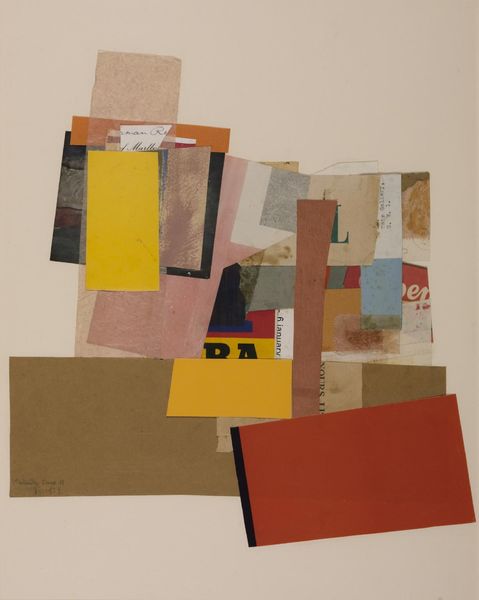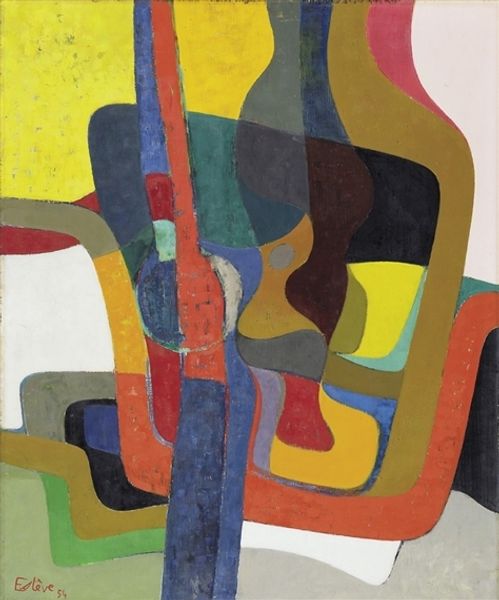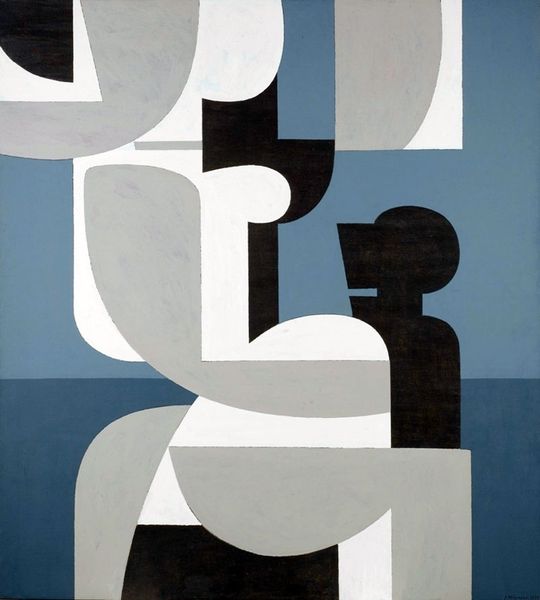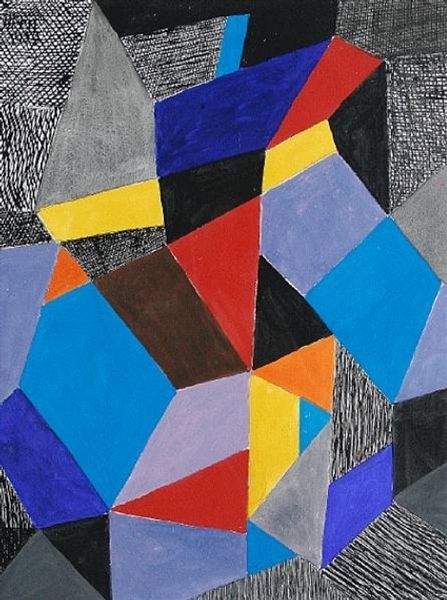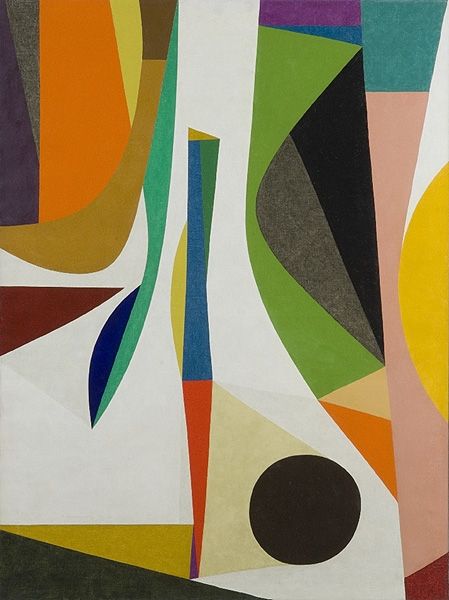
acrylic-paint
#
acrylic-paint
#
figuration
#
form
#
geometric
#
abstraction
#
modernism
Copyright: Eileen Agar,Fair Use
Editor: This acrylic painting, "Figura," was created by Eileen Agar in 1972. The geometric shapes and subdued colors give it a surprisingly calm, almost monumental presence. What's your take on it? Curator: It's fascinating to see Agar engaging with geometric abstraction so late in her career. Having been associated with Surrealism much earlier, this piece suggests a continued negotiation with modernism. The title itself, "Figura," implying a figure within abstraction, speaks volumes. How do you think its construction relates to the art world at that time? Editor: Well, I know Modernism was dominant but questioned. Maybe she’s finding her own space between formal abstraction and… something else? The painting is so clean and structured, yet retains an underlying sense of playful composition, as it has forms like heads and profiles emerging as you study it. Curator: Exactly. After World War II, and increasingly in the '70s, the dominance of American art and the "triumph" of Abstract Expressionism prompted artists around the world to respond in very distinct ways. Figurative elements started re-emerging. What do you make of the chessboard pattern at the bottom? Does it introduce another layer of cultural understanding? Editor: Perhaps the checkerboard refers to artificality - and a visual challenge that the rest of the painting ignores in its coloring and textures? I hadn't really thought about it, but now I see it adds this unexpected depth that encourages viewers to reflect on the nature of form. Curator: The dialogue between control and freedom in this period – both in artistic practice and the larger social context – feels very present here. Editor: Absolutely. I'm now seeing "Figura" as less an isolated work and more of a cultural statement of the time! Curator: Precisely. Analyzing it in its socio-historical place clarifies our interpretation.
Comments
No comments
Be the first to comment and join the conversation on the ultimate creative platform.

